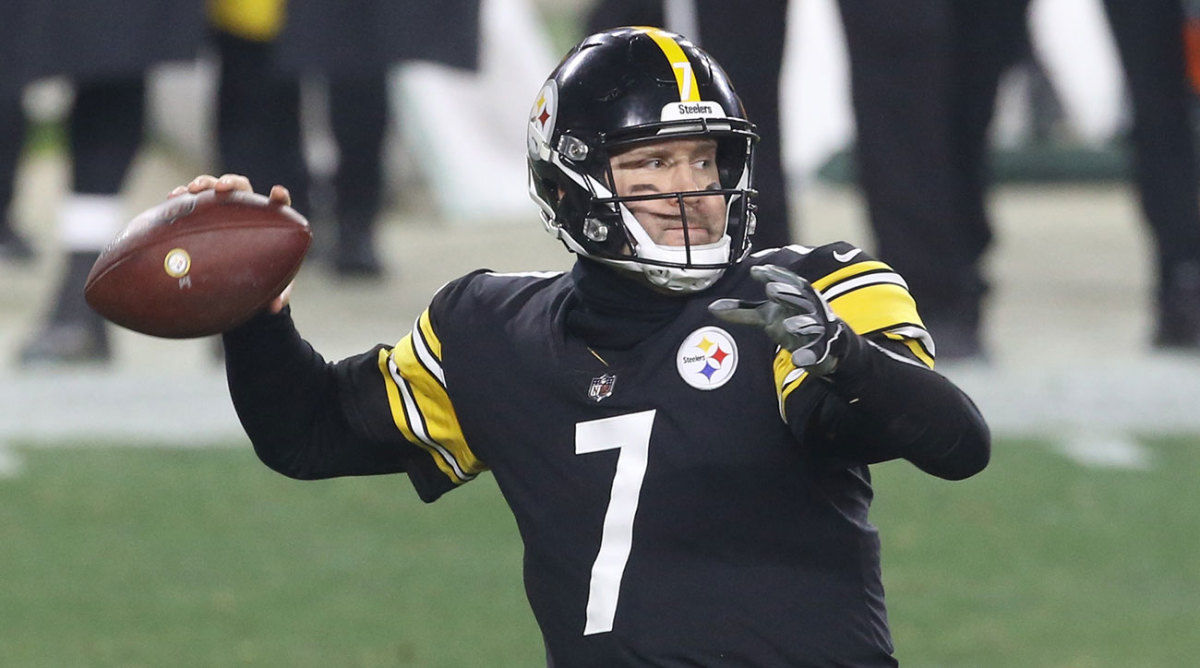Ben Roethlisberger's Return to the Steelers Shows a Failure to Find His Successor
After some backroom salary cap wrangling, Ben Roethlisberger and the Steelers are officially reuniting for one more shot at a third Super Bowl title. That may sound like good news for those who enjoyed a 12–4 season and nervously weathered the year-end theatrics, which included Roethlisberger looking longingly out into the stands at Heinz Field after the team’s playoff loss, intimating that it may be his last moment as a Steeler, and ownership later coming out to declare that it would not bring him back in 2021 on his gargantuan salary.
But the fact that we’ve arrived here is no victory; it’s a concession to the hard reality of Pittsburgh’s long-term prospects. The Steelers do not have another option at quarterback. As Roethlisberger slipped over the hump from legitimate in-prime contender to crafty veteran who can still begrudgingly maneuver an offense, there was no sense of urgency to develop another option behind him. When he tore three flexor tendons off the elbow bone in his throwing arm in 2019, an injury that Roethlisberger himself said he did not believe any quarterback had ever come back from, the Steelers selected a wide receiver, a linebacker, a running back, two guards, a safety and a defensive tackle in the subsequent draft.

It is ultimately difficult to fault Pittsburgh’s general manager, Kevin Colbert, who is one of the closest things the profession has to a savant. He traded a 2020 first-round pick for Minkah Fitzpatrick, and ended up stealing one of football’s best defensive players. The second-round pick he could have used in 2020 to draft Roethlisberger’s successor was instead spent on Chase Claypool, the brilliant young playmaker who made JuJu Smith-Schuster expendable this offseason, saving the Steelers another boatload of money and cap space.
His one major flaw to this point has been how long and how dearly he and the franchise have clung to the idea that Roethlisberger is the only option who can maximize this talented roster. Similar to the way the Giants were unable to envision a life beyond Eli Manning and subsequently sacrificed years of free agency and draft capital to legitimize that belief, the Steelers find themselves hoping for something of a miracle. Roethlisberger is not ageless like Tom Brady. He does not face the same advantageous path back to a Super Bowl as Denver-era Peyton Manning. The challenges are much steeper.
He is who he is: incredibly successful and knowledgeable, but freshly 39, and someone who must maneuver his newly developing physical limitations and incorporate them into an offense that is begging for an explosive, dual-threat passer who can vibrate at the same frequency as the rest of the offense.
The Buccaneers’ move to acquire Brady, along with the NFC playoff field in 2021 being populated by a handful of “geriatric” quarterbacks still effectively moving the ball, may have ultimately been the legitimizing force behind this decision, though it is more akin to wishful thinking.
If anything, days like Thursday legitimize the Packers’ brain trust drafting Jordan Love a year ago. It was a monumentally unpopular and uncomfortable decision that resulted in a brief, successful media tour from the incumbent quarterback hoping to place his coach and general manager into a headlock. Matt LaFleur and Brian Gutekunst weathered that storm and now stand alone as one of the few teams in the NFL with a plan at quarterback should something go awry or should age finally reveal itself as the inevitable zapper of talent that it is.
The Weak-Side Podcast now has its own feed! Subscribe to listen to Conor Orr and Jenny every week.
Steelers fans will retort, perhaps correctly, that there really was no chance for Colbert to draft a successor and find value. Outside of taking Lamar Jackson over Terrell Edmunds in 2018, what was he supposed to do, take Dwayne Haskins in 2019? They ended up with Haskins on a reserve/futures deal, anyway, after Haskins flamed out in Washington. Was he supposed to not trade for Fitzpatrick and, with the No. 18 pick in the 2020 draft, select Love or Jalen Hurts?
Maybe not. But now, if he wants to avoid entering 2021 without any sort of plan for his quarterback in 2022, he will be in the uncomfortable position of choosing between less-than-ideal options. He can draft Roethlisberger’s clear successor in 2021, despite being in a desperate win-now mode, which would mean utilizing a first-round draft pick on a quarterback instead of using it to help improve a roster that is living for the moment. Or, he could spend future draft capital on some low-hanging developmental fruit (Sam Darnold, anyone?), which would rob from the franchise’s long-term ability to build around the next Steelers quarterback. All of this while managing a heap of dead-cap money (though not nearly the size and scope of Jared Goff’s deal with the Rams or Carson Wentz’s deal with the Eagles), which will remain once Roethlisberger is gone.
A Super Bowl makes it all worthwhile, which is the Powerball ticket so many franchises with aging quarterbacks hope to score. They’d better hope Roethlisberger can get them there.
